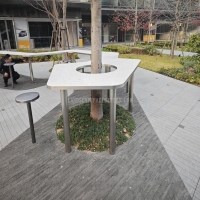Welcome to the website for landscape facilities products and knowledge.
What are the most critical factors to consider when selecting a table for use in high-altitude locations?
When choosing tables for high-altitude environments, several crucial factors demand careful consideration to ensure longevity and functionality. The extreme conditions found at elevation present unique challenges that ordinary furniture cannot withstand.
Material selection stands as the primary concern. Standard materials quickly deteriorate under intense ultraviolet radiation and temperature fluctuations common at high altitudes. Aluminum alloys with powder-coated finishes offer superior resistance to corrosion and UV damage, while certain marine-grade polymers maintain structural integrity despite repeated freeze-thaw cycles. Teak and other dense hardwoods provide natural weather resistance but require regular maintenance.
Structural stability becomes increasingly important with elevation. Tables must withstand powerful winds that frequently occur in mountainous regions. Look for designs with weighted bases, cross-braced legs, or anchoring systems. The table's center of gravity should remain low, and leg diameter matters significantly more than at sea level. Engineering that accounts for lateral forces prevents dangerous tipping incidents during sudden gusts.
Weight considerations create a complex balance between portability and stability. Lightweight materials like aircraft-grade aluminum facilitate transportation to remote locations, but may compromise stability. Conversely, excessively heavy tables become impractical for high-altitude use where every kilogram matters during transport. Modular designs that assemble on-site often provide the optimal solution.
Temperature tolerance represents another critical factor. Materials must endure temperature swings exceeding 30°C within single days without warping, cracking, or becoming brittle. Metal components should have thermal expansion properties that match connecting materials to prevent joint failure. Surfaces must remain functional across the entire temperature range, avoiding extremes that make touching them dangerous.
Weather resistance extends beyond simple waterproofing. Tables must shed snow efficiently, resist ice accumulation in joints, and withstand hail impacts without damage. Fasteners and moving parts require stainless steel or titanium components to prevent seizing in freezing conditions. Surface treatments should inhibit mold and mildew growth during humid periods.
Finally, consider maintenance requirements in remote locations. Tables needing frequent adjustment or specialized tools for repair become liabilities when professional services are unavailable. Designs with minimal moving parts and easy-to-clean surfaces prove most practical for extended high-altitude use. The optimal high-altitude table combines rugged durability with thoughtful engineering specific to elevation challenges.
Related search:

Recommendation
An outdoor bar counter with stainless steel and terrazzo materials in an irregular shape